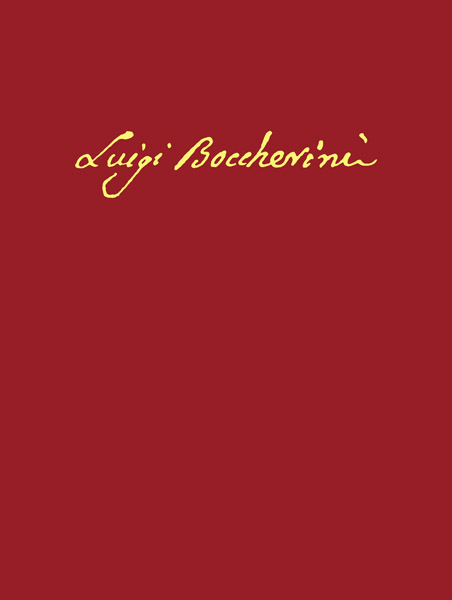edited by Rudolf Rasch, Bologna, Ut Orpheus Edizioni, 2014 [Opera Omnia – Vol. Vol. XXVII.I], ISMN: 979-0-2153-2224-0, ISBN: 978-88-8109-485-1.
The Trios for two violins and violoncello presented in this volume were listed as Opus 1 by their composer, Luigi Boccherini, in his own, retrospective thematic catalogue compiled in 1796. They must therefore be considered as the composer’s very first works.
According to the catalogue just mentioned the trios were written in 1760, when the composer was barely seventeen years old. In that year he stayed for some time in Vienna with his father, Leopoldo Boccherini. The Trios were soon followed by a set of string Quartets, Opus 2, and a set of violin Duets, Opus 3.
It is probably no accident that these early works comprise one set of quartets, one of trios and one of duets. The series may be seen as a sequence of exercises in composing for two to four stringed instruments. Nevertheless the compositions in these sets, including the Opus 1 Trios, are complete and even mature compositions.
No trace of inexperience can be found in them. They already show many features which were to become highly characteristic of the composer’s future works: a prominent role assigned to the violoncello; “blockwise” composition; frequent application of repeated phrases; an emphasis on atmosphere and mood rather than on complex counterpoint and harmony (although some movements are true fugues and unexpected harmonic turns may occur every now and then), and so forth. The Trios Opus 1 are immediately identifiable as works by Boccherini; one tradition says that they were particularly praised by Christoph Willibald Gluck.
The Trios Opus 1 belong to Boccherini’s most widely disseminated works. Almost fifty extant manuscripts containing between one and six of these pieces can be considered as “pre-publication manuscripts”, that is, based on Boccherini’s original version directly or indirectly, but without the intervention of an edition. They represent a process of dissemination which had begun before the works were published. Various designations are used as titles, not only ‘Trio’, but also ‘Divertimento’ or ‘Sonata’. The pieces were published in Paris by Antoine Bailleux under the title Sei trietti per due violini e basso, with the opus number 2, in the summer of 1767.
This followed Jean-Baptiste Venier’s edition of the Quartets Opus 2 which had appeared a few months earlier as Opus 1. Unlike Venier’s edition of the Quartets, Bailleux’s edition of the Trios is certainly not authorized, but rather based on a circulating manuscript. The edition was reprinted several times during the second half of the eighteenth century and the first decades of the nineteenth. All these editions made the works easily available in the music shop during those years.
The present edition is the first modern edition making use of the dissemination of the works in manuscript. Given the sources that are accessible, this brings us as close as possible to Boccherini’s original text.












